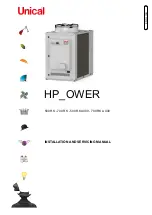
ElectraCOOL™ LA600
USER’S MANUAL
ADVANCED THERMOELECTRIC · PO Box 7091 · Nashua, NH 03060
Toll free: 1 (866) 665-5434
·
(603) 888-2467
·
fax: (603) 724-6740
·
e-mail: [email protected]
11
Above flash point, vapor-air mixtures are explosive within flammable limits noted above. Containers may
explode when involved in a fire.
Fire Extinguishing Media:
Dry chemical, foam or carbon dioxide. Water or foam may cause frothing. Water spray may be used to
extinguish surrounding fire and cool exposed containers. Water spray will also reduce fume and irritant
gases.
Special Information:
In the event of a fire, wear full protective clothing and NIOSH-approved self-contained breathing apparatus
with full facepiece operated in the pressure demand or other positive pressure mode. Toxic gases and
vapors may be released if involved in a fire.
6. Accidental Release Measures
Ventilate area of leak or spill. Remove all sources of ignition. Wear appropriate personal protective
equipment as specified in Section 8. Isolate hazard area. Keep unnecessary and unprotected personnel from
entering. Contain and recover liquid when possible. Use non-sparking tools and equipment. Collect liquid in
an appropriate container or absorb with an inert material (e. g., vermiculite, dry sand, earth), and place in a
chemical waste container. Do not use combustible materials, such as saw dust. Do not flush to sewer! US
Regulations (CERCLA) require reporting spills and releases to soil, water and air in excess of reportable
quantities. The toll free number for the US Coast Guard National Response Center is (800) 424-8802.
7. Handling and Storage
Keep in a tightly closed container, stored in a cool, dry, ventilated area. Protect against physical damage.
Separate from acids and oxidizing materials. Containers of this material may be hazardous when empty
since they retain product residues (vapors, liquid); observe all warnings and precautions listed for the
product.
8. Exposure Controls/Personal Protection
Airborne Exposure Limits:
-OSHA Permissible Exposure Limit (PEL):
50 ppm Ceiling
-ACGIH Threshold Limit Value (TLV):
50 ppm Ceiling (vapor)
Ventilation System:
A system of local and/or general exhaust is recommended to keep employee exposures below the Airborne
Exposure Limits. Local exhaust ventilation is generally preferred because it can control the emissions of the
contaminant at its source, preventing dispersion of it into the general work area. Please refer to the ACGIH
document,
Industrial Ventilation, A Manual of Recommended Practices
, most recent edition, for details.
Personal Respirators (NIOSH Approved):
If the exposure limit is exceeded, a half-face respirator with an organic vapor cartridge and particulate filter
(NIOSH type P95 or R95 filter) may be worn for up to ten times the exposure limit or the maximum use
concentration specified by the appropriate regulatory agency or respirator supplier, whichever is lowest. A
full-face piece respirator with an organic vapor cartridge and particulate filter (NIOSH P100 or R100 filter)
may be worn up to 50 times the exposure limit, or the maximum use concentration specified by the
appropriate regulatory agency or respirator supplier, whichever is lowest. Please note that N series filters are
not recommended for this material. For emergencies or instances where the exposure levels are not known,
use a full-face piece positive-pressure, air-supplied respirator. WARNING: Air-purifying respirators do not
protect workers in oxygen-deficient atmospheres.
Skin Protection:
Wear protective gloves and clean body-covering clothing.
Eye Protection:
Use chemical safety goggles. Maintain eye wash fountain and quick-drench facilities in work area.










































